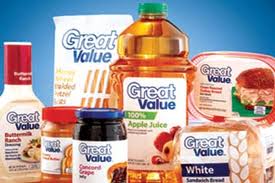According to the survey, 83% of consumers say they’re having difficulty affording their regular groceries and an overwhelming majority (90%) say they plan to continue reducing unnecessary purchases. But it’s not all bad news for food and beverage companies, Susan Viamari, editor of Thought Leadership at IRI, told FoodNavigator-USA.
“It’s kind of a positive and negative scenario,” she said. “The negative impact of reducing certain purchases is going to be felt on treat-type purchases or those not core to daily eating and drinking occasions. But the good news for CPG food and beverage companies is that 53% of consumers are dining out less often. This provides an opportunity for F&B marketers to capture more of the occasions that may have been out of the house before.
“Thinking about the ‘restaurant-in-home’ type of environment—whether it’s a meal, treat or coffee break, in all these instances, packaged goods solutions can still be indulgent but less expensive than an ice cream or coffee shop.”
In line with this, nearly half (49%) of consumers also said they’re cooking from scratch more and using fewer convenience items to save money. Still, much like value means different things to different people, so does cooking with fewer convenience items, Viamari noted. “For example, people who are heat-and-serve cookers may trade down to easy prep type of things. The easy prep cooker may move down to full ‘from scratch’ cooking,” she said.

Consumers trading brands to maximize value; PL premium innovation to have an impact
As consumers remain fixed on maximizing value, they’re willing to trade down to different brands—including private label—to get it. Indeed, a third of survey respondents said they’re giving up some of their favorite brands (across categories) to save money. As in years past, brand loyalty remains strongest in more pressing categories, such as healthcare and beauty, Viamari said, adding that there’s often more wiggle room with price sensitivity when it comes to those types of food and beverage purchases as well.
Still, mid- and premium-tiered brands will have a run for their money when it comes to innovation, as private label brands continue to match their national and regional counterparts in new product rollouts.
"If you look at innovation in private label, especially in food and beverage, there's a lot happening with the premium-tiered products," Viamari said. "That does impact private label’s average price gap. But it also poses a challenge for marketers of national, regional brands because with private label premium tiered solutions, consumers are getting indulgent, gourmet attributes at a lower price tag. That’s not going to impact the value tier as much—more the middle and higher ends of the value spectrum in national and regional brands."
Dollar and convenience store channels ‘rejig’ marketing strategy
But the pursuit of value may also have an impact on channel selection, in particular the dollar and convenience store channels, where IRI has seen increased momentum, which is likely to continue this coming year. Viamari noted that those channels are also more proactively pulling in new customers with a wider product offering.
"I do think that dollar stores have re-jigged marketing strategy," she said. "Back before the downturn, dollar stores were very heavily shopped by low-income shoppers. As the economy tanked and financial hardship made its way up income spectrum, dollar stores did a great job at saying, 'We don’t just want to attract low income.' We started seeing wider aisles and a different assortment of products, including more food and beverage offerings. We've seen more of this in drug and convenience stores as well."
When asked about which food and beverage CPG categories capitalize most on depressed shopper sentiments, Viamari called it more of a marketing opportunity than a category opportunity.
“What we are finding is that in order to stay top of mind and in the baskets of conservative shoppers, marketers need to focus in on value that’s highly targeted,” she said. “Value might mean quick and easy, super healthy, or extravagant flavors, depending on who the consumer is. Marketers need to understand their core shoppers and target what they’re looking for. It’s not always all about price.”
